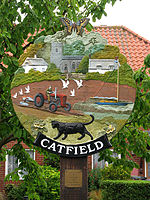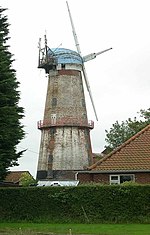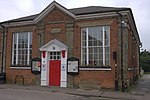Catfield railway station
Disused railway stations in NorfolkEast of England railway station stubsFormer Midland and Great Northern Joint Railway stationsPages with no open date in Infobox stationRailway stations in Great Britain closed in 1959 ... and 2 more
Railway stations in Great Britain opened in 1880Use British English from April 2017
Catfield railway station was a station in Catfield, Norfolk. It closed in 1959.
Excerpt from the Wikipedia article Catfield railway station (License: CC BY-SA 3.0, Authors).Catfield railway station
Yarmouth Road, North Norfolk Hickling
Geographical coordinates (GPS) Address Nearby Places Show on map
Geographical coordinates (GPS)
| Latitude | Longitude |
|---|---|
| N 52.74642 ° | E 1.53668 ° |
Address
Yarmouth Road
Yarmouth Road
NR29 5BJ North Norfolk, Hickling
England, United Kingdom
Open on Google Maps







